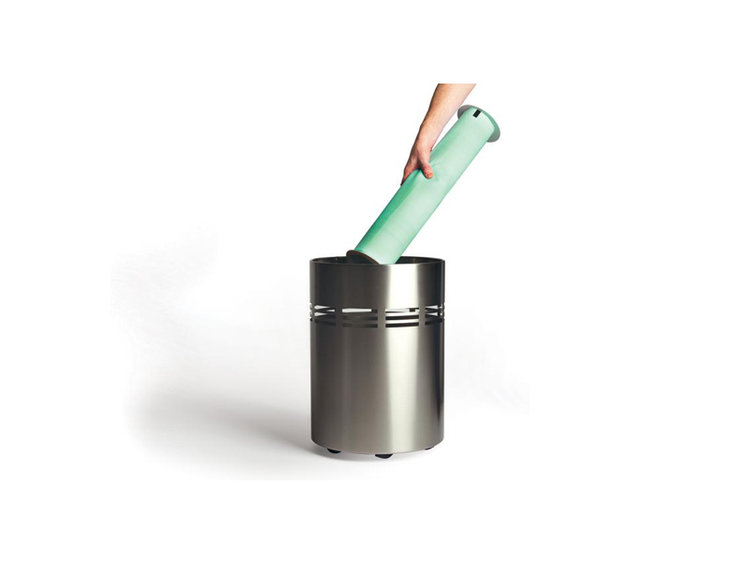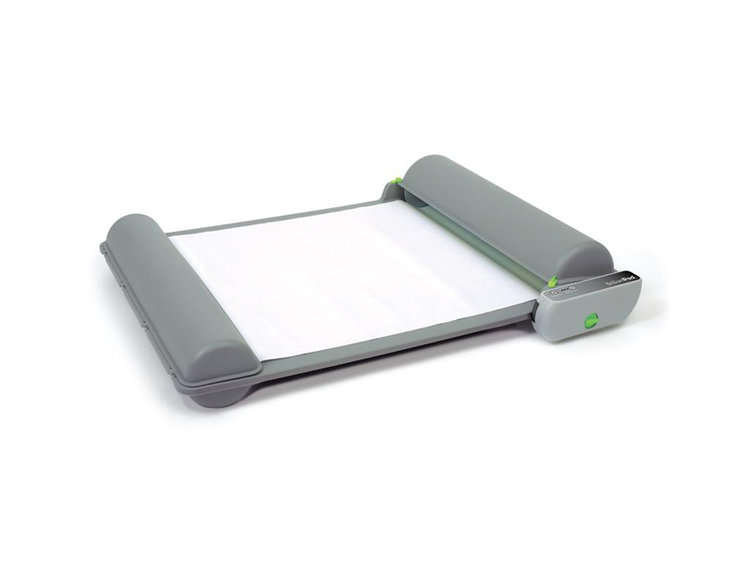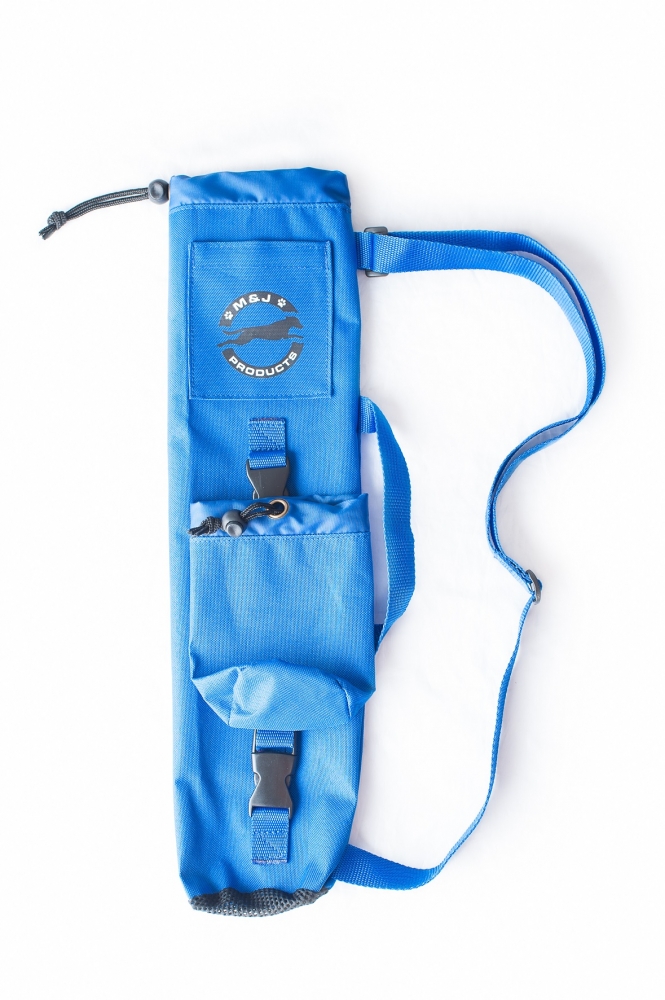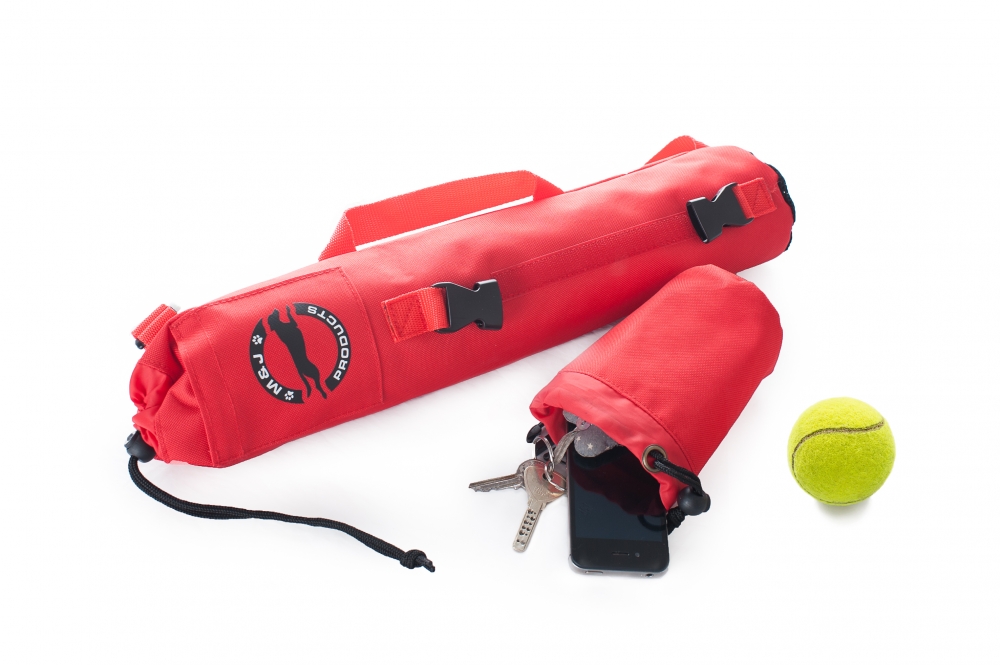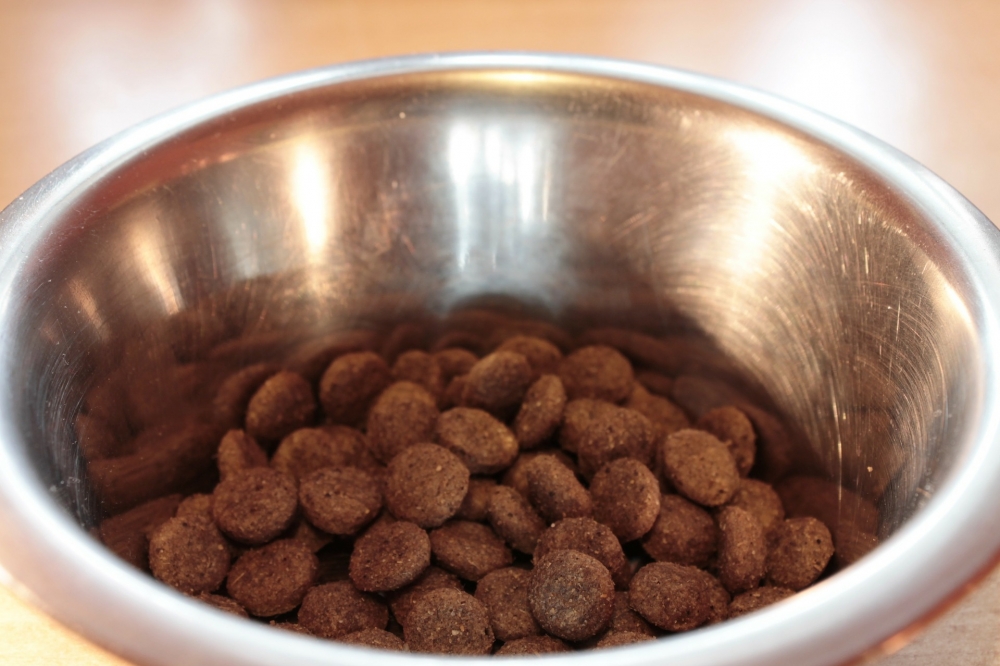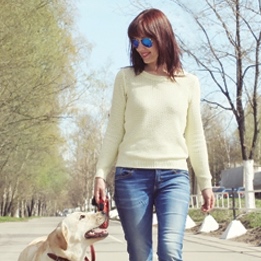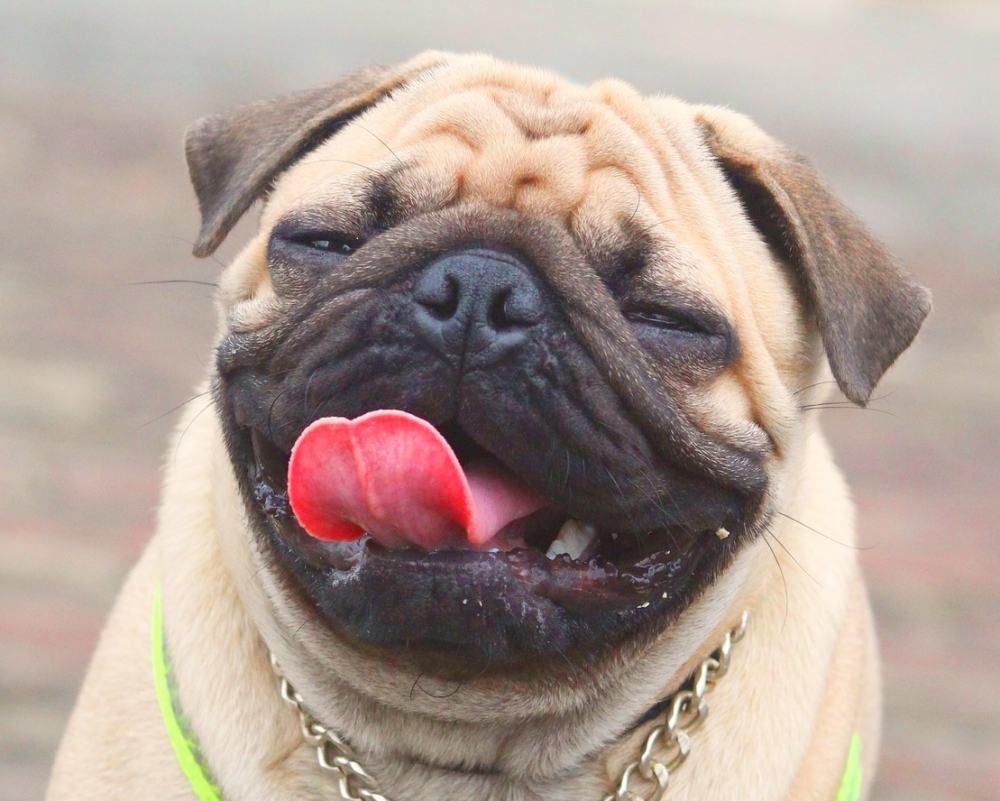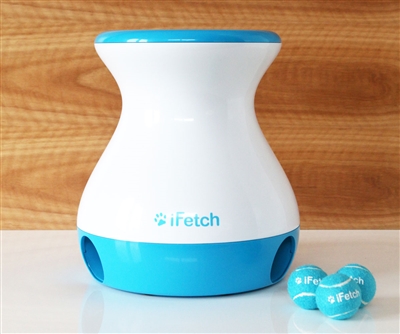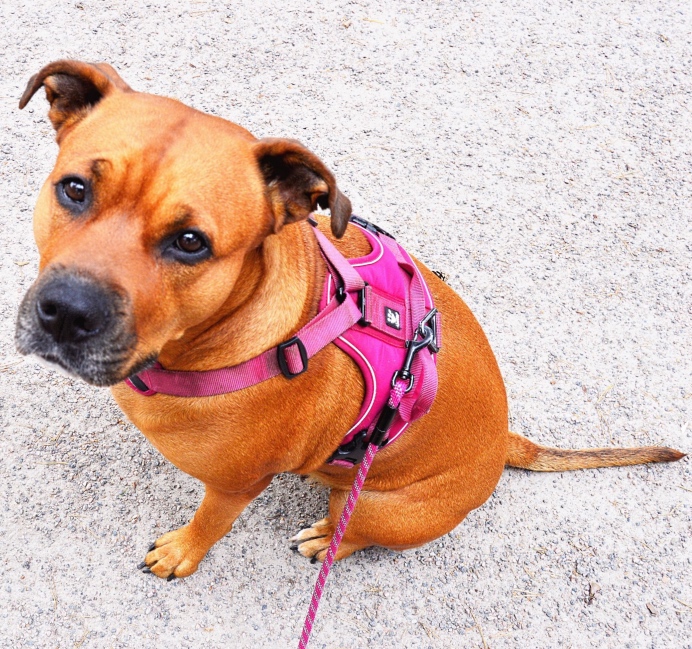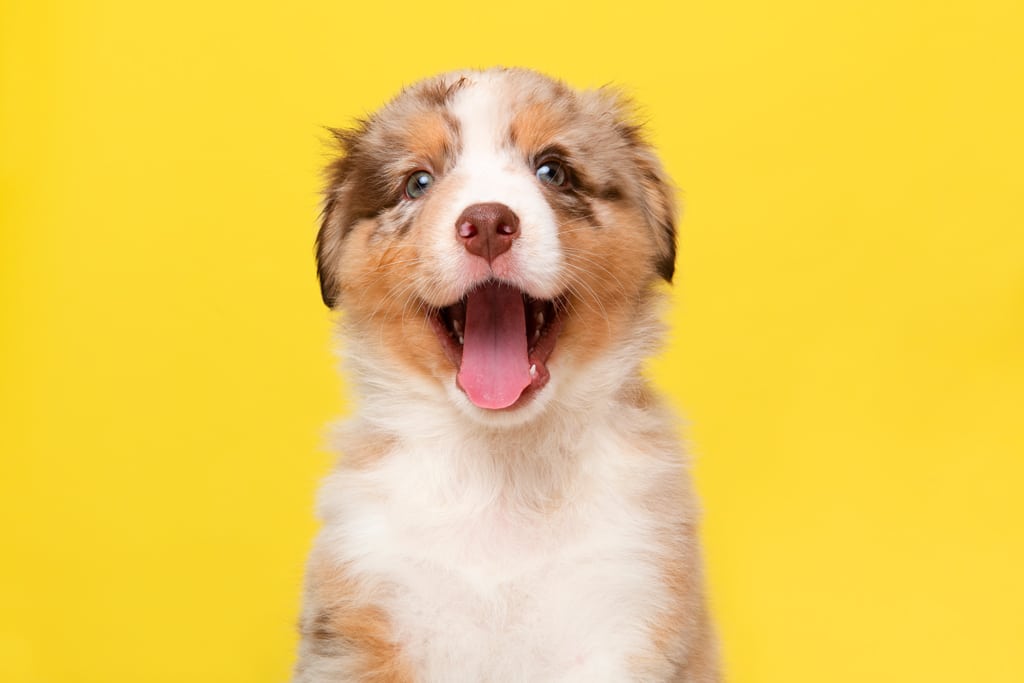- Dog CareDog LifeCommunity
- Photo Contest
Photo Contest- Giveaways
Top 15 Dog Behaviour Myths
When it comes to dog behaviour, some widely accepted beliefs are simply not true. Here’s the lowdown on 15 common canine misconceptions and the actual truth of the matter.
#1 Playing tug makes dogs aggressive
It’s easy to see how this one might have started since many dogs vocalize when playing tug, but there is simply no evidence supporting this theory. A study published in the Journal of Applied Animal Welfare Science examined 50 people and their dogs playing tug-of-war-type games. Researchers concluded the game itself had no significant impact on aggression directed at either family members or strangers. In fact, they reported that dogs that played tug of war had more confident interactions with their people. This makes sense as tug is a cooperative behaviour directed at the “prey,” a.k.a. the toy. Tug can provide exercise, release tension, act as an outlet for excess energy, and serve as a cooperative, fun activity.
Tug tip: Teach “drop it” so you can insert breaks into the game to control the excitement level. And if at any point teeth accidentally contact skin, say, “Too bad!” and put the toy away.
Photo elbud/Shutterstock
#2 Taking away food during mealtime prevents food aggression
The thinking behind this is you will accustom your pup to having people touch their food, but taking your pup’s food while he’s eating will only teach him that your approach means bad things happen. Instead, teach your puppy that your approach is a wonderful thing. Every now and then, pass by while your pup is eating and drop a super yummy treat in the dish.
#3 Dogs want to dominate you
Everything from jumping on people to pulling on-leash to exiting a doorway first has been ascribed to doggy dominance. But the truth is that dogs are not up at night plotting to overthrow our kingdoms. They simply do what works, and just need training and boundaries. The dominance myth, by the way, originated with a wolf study about “alpha wolves” that was later debunked. Sadly, the mentality had already trickled down to dog training and has never left, even though the training approaches motivated by correcting so-called “dominance” are outdated and damaging.
Photo lucigerma/Bigstock
#4 A wagging tail means a happy dog
Many dogs wag their tails when happy, but don’t assume that a waving fur flag always indicates joy. Dogs will wag their tail to convey a range of emotions, including happiness, feeling threatened, anxiety, submission, and excitement. An anxious or fearful dog may hold their tail low and wag in a small, fast arc. A confident dog or one who is broadcasting dominance over another dog may hold their tail high and wave it stiffly like a flag. Tail wags must be assessed in conjunction with other body language to paint an accurate picture of how a dog is feeling.
Pro Tip: Direction of a tail wag can convey emotion. Studies show that dogs wag their tails slightly to the right when they are happy or confident and to the left when they are frightened.
Photo tbergphoto/Bigstock
#5 You should wait until puppies are fully vaccinated to socialize
Most behaviourists agree that the window of optimum socialization, meaning the period during which you can expose a pup to novel stimuli, and they will be less likely to fear those things later, is between four and 12 weeks. But vaccinations are normally not complete until 16 weeks. While traditional advice was to wait until full vaccination status was reached to socialize puppies, the American Veterinary Society of Animal Behavior now recommends introducing pups to new people, places, and experiences before sixteen weeks—just take it slow and avoid places with high canine traffic—and even advises starting puppies in kindergarten classes at seven to eight weeks old.
Photo Willee-Cole/Bigstock
#6 Your dog feels guilty
You come home to find that your dog has shredded your favourite pair of slippers. “Bad boy! What did you do?” you admonish as your dog hangs his head and averts his eyes, ears lying flat. Is your dog feeling guilty? Probably not—he’s simply reacting to being yelled at. Dr. Alexandra Horowitz, a dog-cognition expert at Barnard College, studied whether humans can detect guilt in dogs. Her study found that dogs most often looked guilty when a person scolded or was about to scold them, not when the dog actually disobeyed the person’s request not to eat a treat.
So, do dogs actually feel guilty? Jury is out. “My study was decidedly NOT about whether dogs ‘feel guilt’ or not,” says Horowitz. “I would feel dreadful if people then thought the case was closed on dogs (not) feeling guilt, which is definitely not the case.”
Photo Meni-Photos/Bigstock
#7 In a multi-dog home, the “alpha” should be given treats and attention first
Dogs establish dominance and submission among themselves. While some owners give the “top dog” treats and attention first to “support the hierarchy,” in fact, attempting to bolster either dog’s position by treating first is not likely to make any difference.
Photo Nadezhda-Zaitceva/Bigstock
#8 Petting your dog when he’s afraid will reinforce the fear
Fear is an emotion and as such, it cannot be reinforced by receiving a reward. If I were afraid of being mugged and had to walk down a dark alley, would you giving me a piece of chocolate when I emerged make me feel any less afraid the next time? Nope. Behaviours can be reinforced; emotions cannot so go ahead and comfort your dog any way you’d like.
Photo websubstance/Bigstock
#9 Using treats to train dogs is bribery
Most dogs are food-motivated, and treats make training easy and fun for everyone. But there is a difference between a reward and a bribe. Treating a dog who comes when called is a reward. Waggling a treat while saying, “Come!” is bribery. Treats can eventually be replaced by real-life rewards such as a door opening for a walk or eventually phased out completely should you wish but there is no harm in rewarding good behaviour with a treat. Positive reinforcement makes relationships better.
Photo graphicphoto/Bigstock
#10 If your dog growls, you should punish him
Growling is a dog’s way of saying they’re uncomfortable with something. You want them to communicate this info, not escalate straight to biting. Think of growling as your dog’s early warning system. Veterinarian, animal behaviourist, and dog trainer Ian Dunbar calls deterring growling “removing the ticker from the time bomb.” Plus, if you punish dogs for growling, they will have one more negative association with whatever is causing stress.
Pro tip: If your dog growls, defuse the situation as calmly as possible. Then, begin to modify the behaviour by addressing the root of the problem.
Photo New Africa/Bigstock
#11 You can’t teach an old dog new tricks
This one is an oldie but goody, much like senior dogs themselves! You can absolutely teach an old dog new tricks. Done properly, trick training keeps canine minds active, and keeps dogs engaged and having fun. Studies of canine cognitive decline show that a multi-targeted approach, such as antioxidants combined with behavioral enrichment, is most effective at preventing dementia in dogs, so keep working that mental muscle!
Photo Annette Shaff/Shutterstock
#12 When my dog barks at people or dogs who come near us on walks, she’s protecting me
While there are some dogs who are protective of their owners, the vast majority of dogs are actually protecting themselves. The leash prevents your dog from getting away when a big scary thing (a person or other dog) is approaching. The bark is your dog’s way of saying, “Don’t make me come over there, you big scary thing!” when what he really wants is to drive the scary thing away.
Photo stephm2506/Bigstock
#13 Dogs who are afraid of men have been abused by a man
This is a common assumption, especially among those who adopt shelter dogs and discover that the dog is afraid of men. Fearful dogs are normally more afraid of men than they are of women or children. Men are generally larger, have deeper voices, move differently, and may stare more directly. Although it is always possible that a dog has been abused by a man, it should never be assumed.
Photo Sandra Del Rio/Bigstock
#14 Dogs urinate or defecate when we’re gone to spite us
Though people commonly think their dog has eliminated inside the house to get back at them, perhaps for leaving them alone, this is not the case. Dogs lack the capacity for retaliation and revenge. A dog who has been potty trained but still has “accidents” when left alone may be suffering from separation anxiety. Or, he might be opportunistic, knowing that if he’s caught in the act when your home, he’ll be scolded, but when no one’s around, all bets are off!
Photo markcarper/Bigstock
#15 Some dogs need a heavier hand when being trained
Regardless of whether a dog is reactive, aggressive, or what some would term stubborn, no dog needs harsh physical corrections. Meeting aggression with aggression is never the answer and is likely to make things worse. Training and behaviour modification using positive, gentle methods is the way to go even with the most severe behaviour cases.
Photo photoboyko/Bigstock
This article originally appeared in the award-winning Modern Dog magazine. Subscribe today!
What to do About a Fearful Dog
Sure, to you, they look like delivery folks, vacuum cleaners, and kids on skateboards. But your dog is convinced they may be potential serial killers, demons, and monsters. Don’t you wish you could just tell him everything is okay? If only it worked that way. Fear is not rational. Some fears are easy to slay, but others may take years to overcome—and your reaction will have a big impact on whether your dog thinks there’s something to worry about. So, how should you help a fearful dog? Should you comfort a dog that is scared? Read on to find out…
First off, is your dog afraid? Some signs of fear are more subtle:
• Balking. For example, your puppy refuses to walk in your neighbourhood. You may think she’s tired or walking far is too hard for her yet, but in many cases, she is simply afraid of the environment and doesn’t want to continue forward.
• Shutting down. Just because your dog is well behaved doesn’t mean he’s okay. He could be suppressed. For example, a young dog is super calm and sedate during a veterinary visit, but during subsequent visits, he growls or snaps. He may not have been okay the first visit, either. Look for changes in his demeanor. Is he always laid back and calm? If yes, then he’s probably not stressed. Is he normally bouncy and inquisitive, but now isn’t acting that way? It’s likely fear.
• Sleeping, especially in puppies. These dogs are also shutting down. It’s one thing if it’s midnight and your puppy is ready for bed. Ask yourself: what is the context? Is she surrounded by new people? Is she at a department store for socialization? A confident puppy will be inquisitive and interested in new surroundings. If your puppy is falling asleep in new places, she could be shutting down.
• Growling, barking, lunging. Most aggression is based in fear. A dog that barks, lunges, and growls at people or dogs is typically afraid of them. He is trying to put on a good front and be scary, so he can frighten away what frightens him. Some pet parents mistake this for the dog protecting them. How can you tell? If you weren’t in the picture, would your dog still bark and lunge at people or other dogs? Then he isn’t protecting you. He’s protecting himself. He would gladly throw you in front of the monster to save himself!
If you’re not sure if your dog is afraid, think about what your dog looks like when he greets you. He is probably curvy and bouncy, with squinty eyes. His tail will wag rapidly, maybe at mid-level. Keep that picture in your mind. Now, look at your dog in different situations. Does he look the same? How does he look when he greets strangers, or another dog? When you take him out to different places? If he doesn’t look the same as when he sees you, then he could be afraid.
Identifying the Monster
The next step is determining what is causing your dog’s anxiety or fear. Sometimes, this is easy. You turn on the vacuum cleaner, and your dog bolts under the bed; the vacuum cleaner is clearly evil. Your dog hesitates when greeting new people; he thinks strangers are dangerous.
Sometimes, it’s hard to tell what is causing the fear. Your dog stops during a walk and stares into space. You can’t determine what he’s looking at that could be the problem. Try listening. Is there a dog barking from behind a fence or in a house? Did a plane just pass overhead? Do you hear a lawnmower in the distance? Your dog may be frightened of sounds.
Do your best to identify the monsters so you can teach your dog not to be afraid of them.
Slaying the Monsters
Once you identify your dog’s triggers, you need to change your dog’s opinion of them.
Desensitization – gradually introduce your dog to the monster at a distance where your dog doesn’t react. As he grows more comfortable in the monster’s presence, you slowly and systematically get closer to the monster.
Counter conditioning – change your dog’s emotional response to the monster. The monster is terrifying, but cheese is delicious. If every time he looks at the monster, you give him a piece of cheese, he will start to associate the monster with cheese. Monsters gain popularity!
It’s important when working on these behaviour modification techniques that you keep your dog under threshold. This is the distance where he notices the monster but before he panics or reacts. If you keep pushing that boundary so that your dog has a reactive episode, you will not see success.
You also want to make sure you don’t flood your dog by putting him in the monster’s den. For example, if your dog is scared of other dogs, don’t take him to a dog park. You can’t control thresholds in a dog park and this scenario is likely to overwhelm him, which will not fix his fear. Instead, work on desensitization and counter conditioning. Start at a threshold where your dog notices other dogs, but before he reacts. Every time he looks at the dog in the distance, mark (click or a verbal “yes”) and treat. Repeat every time he looks at the other dog until the other dog is out of sight. When the monster leaves the picture, the treats stop coming. If your dog will not take treats even if he is not barking and lunging, then he is still over the threshold. Work farther away from his trigger.
Photo photoboyko/bigstock.comShould You Comfort a Scared Dog?
In the past, experts would tell you not to comfort a frightened dog. The theory was that this would reinforce the behaviour, so your dog would act afraid because you praised him when he acted that way. This is not consistent with current practice because fear is not a behaviour, it’s an emotion.
If your best friend came to you in tears and afraid because she got a terrible health diagnosis, would you ignore her? If you gave her attention during this terrible crisis, would you just be indulging her and encouraging her to seek attention? Of course not. You would be there for your friend.
If your dog is afraid, you need to be present for him. Don’t go over the top with your attention, or you’ll convince him something really is wrong. Instead, just stay near him. If he’s trying to climb up your leg to get away from something frightening, go ahead and pick him up. He trusts you to take care of him. Don’t panic yourself, and don’t repeat, “It’s okay! It’s okay! It’s okay!” Just soothe him quietly and calmly.
When he is brave, really lay on the attention! Make a huge fuss over him and tell him he’s the bravest warrior ever. Be a safe harbor for him while you encourage him to slay his demons.
As always, if you need help battling monsters, call in a professional, reward-based trainer who has experience in helping dogs with anxiety and fear. You may also want to consult your veterinarian to see if behavioural medication may help. Facing fear head on can be challenging, but there is hope! Help your dog learn that the monsters he fears are not so scary
after all.This article originally appeared in the award-winning Modern Dog magazine. Subscribe today!
5 Mentally & Physically Stimulating Games to Play with Your Dog
1. Retrieve Toys by Name
Most dogs adore some form of fetch (though you may have to work on the part where they return the tossed object to you). Take your game to the next level by introducing two objects by name (example: “Teddy” and “Blue Whale”). For a mental workout, present both objects at a distance and work with your dog to retrieve the right one (“Go get Blue Whale!”). Need inspiration? A Border Collie named Chaser was trained to comprehend the names of more than 1000 objects. Science Daily reports that researchers at Wofford College “stopped training the dog after three years due to their time constraints, not because the dog could not learn more names.” Bar set. Check out Modern Dog's e-store here for plenty of fun toys your dog will love!
2. Hide-and-go-seek: version 2.0 or classic
In what is being called the “What The Fluff” challenge, people are “disappearing” right before their dogs’ eyes. Videos of this trick recently proliferated across the internet—Google #WhatTheFluff to watch it in action. In a nutshell, people obscure themselves with a blanket while they duck behind a doorframe; when the blanket drops, they’ve disappeared, much to their dogs’ mystification and surprise. This trick is essentially a variant of a hide-and-go-seek game crossed with a bit of sleight-of-hand magic. Give it a try or simply take it back to basics—hide yourself in another room, behind a tree or beneath an object, then call your dog to come find you. Reward your dog with lots of praise, a play session or a tasty treat when she finds you. Hide and seek is a great, simple exercise for bond building and recall, and a wonderful reminder to your dog that good things (Love! Food! Games!) happen when you’re around.
3. Tug-O-War
Tug-o-war is beloved by dogs but many people worry it could cause their dogs to become overly excited or aggressive. Behaviourist Dr. Ian Dunbar counters that when played intelligently, tug-o-war is actually a great way to practice keeping control over your dog when she’s excited. But ground rules are necessary. Dr. Dunbar’s guidelines stipulate that you be the one to initiate the game and to only play if you are able to get your dog to release the tug toy and sit at any time. He advises practicing a release and sit every 30 seconds and mixing in short training breaks before resuming the game—a great reward for your dog’s compliance. To get your dog to release the toy and take a break, he coaches to “waggle a treat in front of her nose” and guide your dog into a sit before releasing with praise, the treat, and offering the toy for more tug time. Playing tug like this teaches dogs that it’s not a big deal if someone takes their toy away as they’re likely to get it back—or something better (food!), thus reducing guarding tendencies. What if your dog takes the toy before you tell her to? Dr. Dunbar enforces a 30-second time out before asking for a sit and offering the toy again. Same mistake three times in a row? Game over, no exception!
4. Nose Work
“Nose work is a lot of fun,” says acclaimed veterinary behaviourist Dr. Nicholas Dodman. Nose work activities allow dogs to harness their noses’ amazing ability to detect scent. Dogs possess up to 300 million olfactory receptors in their noses, compared to our approximate six million. And the part of a dog’s brain that is devoted to analyzing smells is proportionally 40 times larger than ours.
In nose work training, dogs learn to identify and locate a particular scent, often hidden in cardboard boxes, either inside or outside. This fun, mentally engaging work makes use of your dog’s most powerful sense—his sense of smell. To get started, find eight fun scent games you can play with your dog at home at moderndogmagazine.com/nosework.
5. Agility Course Training
Agility courses are simply terrific for dogs. In agility, dogs have to think and remember what comes next in the course (mental engagement), get to run off steam (physical exercise), and work with their favourite person (quality bonding time)—it’s a perfect activity. Furthermore, agility trains your dog to listen while providing them with a terrific amount of exercise. Join an agility group and make new friends, human and canine alike! Or, if joining a group is keeping you from getting started, you can create a DIY agility course in your backyard—get the how-to at moderndogmagazine.com/diyagility.
5 Reasons Your Dog is Whining—and How to Make Him Stop
A barking dog can certainly be annoying. But whining? That’s enough to drive you crazy. Whine, whine, whine, whine… How to stop a dog from whining? It can feel like it goes on for hours. Some dogs also hit a certain pitch, driving a mental spike right through your brain. The more your dog whines, the less patience you have. What is up with the whining, anyway? Dogs whine for a variety of reasons, including appeasement, excitement, and for attention. How you stop it depends on why your dog is whining.
The Attention Whine
“Pay attention to me! Whine, whine, WHINE!” This is one aggravating dog. These dogs whine for you to hurry up and feed them meals, whine for you to throw the ball, whine for you to pet them, whine when they want water, whine to go outside, whine to come inside, and generally whine for whatever it is that they want at the time. This is a behaviour that often gets worse because the pet parent reinforces it.
If you give in to the attention-seeking whiner, you’re paying that behaviour. So your dog will keep whining, because it works. In order to fix this, you have to stand strong. Don’t give in to the whining. Don’t reward the behaviour, which includes not looking at your dog and not talking to your dog when he’s whining. Ignore your dog completely until he quiets.
For example, your dog whines until you let her out of her crate. Don’t look at her; don’t move towards the crate until she is quiet. The second she is quiet, reach for the crate door. If she starts up again, then remove your hand. Wait for quiet. Only when she is quiet do you open the crate door to let her out. The first few times you do this it will take a long time. But if you give in, the whining will only get worse. If you stick to your guns, it will take less and less time, and the whining should stop.
The Stress or Fear Whine
A dog that is frightened or stressed may whine. Is this your dog? Look for other signs your dog may be afraid, including cowering, lip licking, yawning, being clingy, and generally looking worried. She may try to avoid or get away from whatever is causing her to be afraid. She may pace back and forth. Her tail may be tucked.
If your dog is exhibiting these symptoms, yelling at her for whining will not fix the problem because it won’t address her fear. Imagine something is terrifying you and you cry out for help, only to have someone yell at you to shut up. Does that suddenly make you feel comfortable and happy? Of course not! If you have a stressed or frightened dog, try to find out what is causing the stress. Is it a loud noise? People? Other dogs? The vacuum cleaner? Help your dog be less afraid of what is scaring her, and she will be less likely to whine in fear.
To start addressing this, make sure you and your dog are far enough from the scary person or object that your dog is not panicking. Never force her to be close to a person or thing that frightens her. When you are at a good distance away, every time she looks at what is frightening her, give her a treat. See the scary object, get a treat, over and over. If she will not take the treat, it means the scary person or object is greater than your reward. Move her farther away and increase the value of the treat. Work slowly, and don’t rush progress. It may take time to teach your dog that scary objects are not so scary after all. If you need help, work with a professional, reward-based trainer. Address your pup’s fear, and you will find her whining decreases.
If you have a dog that isn’t exactly terrified, but just anxious in general, the same techniques will help. Also, consider increasing your dog’s exercise. Exercise is good for the body and mind. If your dog is tired, she has less energy for whining. Realize that a typical walk is not really adequate exercise for your dog. You might be tired, but your dog won’t be. Aim for at least 20 minutes of cardiovascular activity a day.
The Alert Whine
Some dogs are natural watchdogs. If they hear something or see something, they feel a need to inform you about it. This can take the form of barking or whining. It could be a potential burglar. It could also be a lizard sunning himself on a tree outside a window, or a piece of trash blowing by on the breeze. Some dogs are not picky about what they want to talk about!
If you have one of these dogs, get your treats handy. After one or two whines, call your dog to you and reward her with a treat. With practice, you’ll find your dog whines a couple times and then comes to you, rather than fixating on the whining.
The Excitement Whine
This dog whines when you grab his leash, when he’s in the car, when you’re approaching the dog park—basically anytime he gets excited, particularly if there’s a delay in gratification. There are two ways to approach this—management and training. For management, you want to remove the dog from the situation that is causing him to whine. For example, if your dog whines when he sees something outside the window, block his view of the window. The more he practices the whining, the better he gets at it and the more ingrained the behaviour. So blocking his view helps prevent him from starting whining in the first place. Increasing this dog’s exercise will help, too. If his leash is the cue to whine, try taking your dog outside by the collar and only presenting and attaching the leashing once you’re outside.
For training your dog not to whine, the approach is very similar to what you do with the Alert Whiner. After a couple whines, call your dog to you and give him a treat. Give him other behaviours to do except whining—sit, down, shake paw, any option rather than whining. Channel that energy into something else.
With car whining, this can be tricky because you have to drive. It’s best to have a friend help you. Work in short sessions. For the first sessions, don’t even start the car. Get your dog to where she is quiet in the car without it even moving. Give her treats for being quiet. Then start a really short drive down your driveway. If she whines, pull over and ignore her. Give her treats when she is quiet. What also helps the Car Whiner is a food-stuffed interactive toy. Stuff a rubber hollow toy with peanut butter and her kibble to give her a pacifier while you’re driving.
The Hurt Dog Whine
Dogs also whine when they are sick or injured. Is your dog acting strangely? How is her breathing? Is she eating normally and eliminating properly? Is she old and perhaps arthritic? If you suspect your dog may be whining because she is in pain, please consult your veterinarian.
While whining can be annoying, it’s communication. Your dog is trying to tell you something—you just need to figure out what it is so you can best help your dog learn that silence is golden! Know you know how to stop your dog from whining! You just need to figure out the cause of the whine and address it!
This article was originally published in the award winning Modern Dog magazine. Subscribe today!
The Pee Pad That Will Clean Your Dog’s Mess For You!
Everyone loves their little dogs but not the big mess they leave behind, and more pet parents are using puppy pads to provide convenience and flexility for their small dogs of all ages. Yet handling stinky pads is messy and tiresome. But not any more!
BrilliantPad does the dirty work of cleaning and replacing soiled pads for you. BrilliantPad handles #1 and #2 and then wraps and seals waste to keep your home clean and odor free. Foul odors are locked away so messy and smelly is replaced with clean and fresh. Regular dog pads just don’t do that!
BrilliantPad is hands-off for up to a month at a time. After a roll is used up simply remove and replace — the used roll is clean and dry to your touch. Further, BrilliantPad uses one-third less material than traditional pads and the caps that seal each roll are biodegradable, so you can enjoy all of the convenience without any guilt.
Customers tout BrilliantPad's convenience. One customer wrote how their poodle-mix is a home alone during the work day. With BrilliantPad they “don't have to worry about her potty needs while gone. The roll really does trap the smell and it's just so nice to not have to deal with the hassle of potty pads anymore!”
Other customers find the ease of disposal and odor control their favorite benefits. Another customer writes, “You've got to get one if you don't like touching dirty pads or lingering odors,” and another says, “Once trained, BrilliantPad essentially automates dog pad cleanup. Rolls are convenient and easy to change out. Controls odor relatively well.”
The BrilliantPad machine and replacement rolls are available for sale at www.BrilliantPad.com.
Introducing the Ball Thrower Bag from M&J Dog Products
The Ball Thrower Bag is a must for dog owners who use ball throwers, launchers or chuckers. They are created from lightweight, waterproof nylon in either red or blue. An adjustable strap allows for a comfortable fit and a mesh base allows for water to drain from the bag.
The pouch holds two tennis balls (or equivalent) and is reversible so if clipped on with the opening downwards it stops water gettingonto the balls. Turn it upright in the summer and you can store a mobile phone, keys etc if no extra balls are required (extra balls could always be put in the main bag below the ball thrower). The pouch, like the main bag, has a pull cord to keep it closed.
The bag also has a small pocket for clean poo bags or even treats if preferred.
If interested in one of these bags please contact Jenny on email: mandjdogproducts@outlook.com
They are also available on eBay
Foster The Human-Animal Bond With Clearly Loved Pets
At Clearly Loved Pets we believe that the human-animal bond is an enduring relationship that promotes wellbeing and meets the need for love and affection in both humans and animals. The close relationship between pets and humans has a very long history. The bond is a mutual, emotional and physical connection central to the daily lives of pets and their owners. Increased efforts are now underway to scientifically examine the relationship between humans and their beloved non-human family members.
Research efforts exploring the impact of pet ownership now offer conclusive evidence indicating that pets have a positive impact on overall health. According to the Human Animal Bond Research Initiative, disease-specific research has been conducted on heart disease, obesity, Alzheimer's Disease, allergies, autism, cancer, depression, and post-traumatic stress disorder. Pet ownership impacts these conditions through a variety of physical and social mechanisms including: decreasing blood pressure, anxiety, pain, fear, and social isolation, and increasing a sense of purpose.
With research confirming what many have long-known, pet owners worldwide are seeking premium products for their multi-species homes. Clearly Loved Pets' flagship product, our "clear" paneled, over-sized dog pen, addresses the need to protect your pet, and your home, while you are away. The design is intended for use in a family room, or other central location, so your pet does not feel disconnected from the home and family he/she wants to protect. Most importantly, the guilty feeling of "caging" your dog is gone, as you ensure safety with a comfortable, beautiful, relaxing, "bedroom" for your dog(s).
In the future, look for more innovative, modern, pet supplies at Clearly Loved Pets.
Teach Your Dog To Wink!
Dr. Caroline Coile's specialty is "dogs, dogs, dogs!"
Her Ph.D. was based in canine senses, genetics, and behaviour, and she writes extensively on veterinary, genetics, senses, and other science topics. But that doesn't mean she's not about fun!
A bestselling author, she's written, among other titles, an Encyclopedia of Dog Breeds and Show Me!, a book about showing your dog (this over-achiever shows her dogs, too). She's also authored two books—Beyond Fetch and Silly Dog Tricks for Smart Kids—of fun tricks and games to play with your dog. We asked Caroline to share a fun dog trick that anyone, kids included, can teach their dog, and she offered up this crowd-pleasing trick utilizing classical conditioning. Ready to teach your dog to wink? It's easier than it sounds!
Wink of an Eye
Want to teach your dog to wink? The winking trick is based on a kind of learning called classical conditioning, made famous by Pavlov. He accidentally discovered his dogs would drool at the sight of the person who brought them food, whether that person had food or not—just like you may drool at the sight of your favourite drive-in! What happens is that one thing (the drive-in sign) signals that something else (eating a burger) will follow it, and eventually you start to react (by drooling) to the sign just as you would to eating the hamburger!
In this dog trick the sound of a word ("Really?") will signal something else (being touched on a whisker), and eventually the dog will start to react (by blinking) to the word just as he would to being touched on the whisker. Here's how to do it:
1) Say "Really?"
2) Touch your dog's whiskers on the side of his muzzle, on the same side of his face you want him to wink with.
3) He will automatically blink that eye. Give him a treat.
4) Keep practicing until he starts to wink before you can touch his whiskers.
Now when you say "Really?" to him he will wink as though you and he were sharing a secret. You'll be the hit of the dog park!
For some great Modern Dog approved training treats, visit our treat shop in the Modern Dog e-store!
New Year, New You, New Dog!
It's a new year and time to start fresh. I bet a vast majority of human resolutions focus on diet, activity and fitness. Fido could benefit from a few similar resolutions too!
Here are some suggestions for your dog's happy and healthy new year!
1. No more low quality-commercial food!
I've said it before; just as YOU are what you eat, your DOG is too! Food that is packed with corn, soy and other low quality non-nutritive fillers is simply bad food. Poor quality food can lead to poor health and behavior issues. There are tons of great foods out there, AND if you are up for it, cooking for your dog can be quite simple (check out our DIY Turkey and Sweet Potato pie recipe!). Whipping up a week or two worth of food, forming little portioned out patties and freezing it can be done in a 1/2hr every two weeks!
2. Train your dog
Stop over thinking this project! Honestly, if you have an issue you want to tackle with your dog, take 10 minutes to look it up online or call a trainer and set up a lesson! Both you and your dog will sigh with relief once you do! Each passing day is an opportunity missed at changing your dog's behavior, and it will amaze you what you can accomplish through just a month's worth of effort. Training with a humane and gentle trainer can strengthen the already deep bond you have with Fido. You'll be shocked at how easy training can be when broken into steps properly. Need a trainer? Check out www.apdt.com
3. Remind yourself your dog is a dog
You love that bundle of fur kid; but do not forget he is a DOG. This means, he will take opportunities to hump a leg or a slipper, drag your undies into the living room in front of guests, knock over your garbage can, and dart after an unsuspecting bird or squirrel. So, when these little things have you shaking your head with frustration or bewilderment; take a deep breath and remember, HE IS A DOG. I'm not necessarily condoning all of this behavior, and want to remind you of the resolution suggestion above (TRAIN YOUR DOG!), but the truth is – he is doing what his natural wiring tells him to do. Avoid falling into the "but he KNOWS not to do that," trap. Dogs do not feel guilt or know they've been "bad" after peeing on your floor or tearing apart a garbage bag. They just feel relieved their bursting bladder is empty and satisfied after a good treasure hunt. Instead of feeling frustrated, train, manage and guide your dog. Love him and all his dogginess.
4. Create dog appropriate energy outlets
All active beings need energy outlets. If your dog is tearing apart your garbage or digging in your garden, he's sending you a message. "I AM BORED!" My kids send me this message if I try to pick up my phone for an adult conversation in the evening hours. I should be focusing on their activities; dinner, bath time and book time. My kids run, yell and throw things. Similarly, a dog will bark, dig and chew things. If parents don't provide activities, your bored energy ball WILL find something to do.
5. Check in on your dog's equipment
More and more we are looking toward fashionable gear and equipment for our dogs' daily wear. This is all well and good, but be sure what your dog is sporting is of good quality with a focus on safety! Take time to make sure your tags are attached appropriately (on all 15 collars he wears) and be sure the clasps of your leashes are in good functioning order. Oh, and make sure that your microchip information is up-to-date. Did you change office jobs, move, or switch cell numbers this year?! If so, your microchip needs to be updated!
Warmest wags for a happy and healthy new year!
Still looking for resolution ideas that work for your pup? Learn how to boost your dog's confidence!
How Do I Get My Dog to Stop Barking?
Do you sometimes think your dog just likes the sound of his own voice? While some breeds are naturally prone to barking (the Cairn Terrier and the Chihuahua are two examples), there is often a reason why your dog is being so noisy.
Does your dog want something? Dogs can bark because it’s rewarding. You could be paying your dog for barking and not realize it. If your dog barks to go outside and you let him out, you’ve just paid him for barking. If he barks while you fix his dinner and you give him his food, you just paid him for barking. Be sure you are not accidentally paying your dog for behaviour you don’t want.
Is he frightened? Keep in mind that most aggression (which can manifest in barking, among other behaviours) is actually based in fear. A dog that is frightened of other dogs may lunge towards the other dog, the fur may rise up on his neck, and he may bark and growl. Dogs who are frightened of people, kids on skateboards and other things can show the same behaviour. The dog is barking to try and scare “the monster” away. Other dogs spook at noises or things that suddenly appear in their environments, like thunder or a person coming into your home.
Is he being territorial? Does your dog bark at people who pass by your house or car? If so, your dog is barking to protect and proclaim what he sees as his domain.
Dogs can also bark in greeting because they are frustrated when they hear other dogs bark, and more. Your first step is to try and figure out why your dog is barking. Once you do, then you can tackle the noise.
Here are some ways you can teach your dog to be more quiet:
1. Ignore the barking
This can be hard! It’s especially effective, however, if your dog is barking to get attention or because he wants something. Only pay attention to your dog when he’s quiet. Keep in mind, if you’ve been rewarding your dog for barking for some time, the barking will get worse before it gets better. Persevere! If you waffle back and forth, the barking will only continue and likely worsen.2. Remove the motivation
If your dog is being territorial, block his view of the things that trigger his barking. If he’s barking at things he sees out a window, close the curtains or blinds, or confine your dog to another area of the house where he can’t see his triggers. You can also find peel-and-stick window film in home supply stores that can prevent your dog from seeing through the window.3. Help your dog be less frightened
To do this, work at a distance from whatever it is that scares your dog; you need to get far enough away that your dog doesn’t bark. When he sees his trigger, give him some delicious treats before he can bark. As long as he does well at this distance, move slightly closer and repeat. Gradually work closer and closer to the triggers until your dog begins to feel more comfortable near them because he anticipates treats. This may take many sessions, depending on how fearful your dog is. If your dog reacts and begins barking, you went too far.4. Teach “Hush.”
When your dog is barking, get some treats. When he’s quiet, mark the behaviour with a clicker or a verbal “yes,” and immediately give him the treat. Repeat. When he is reliably getting quiet faster, put in on cue, “Hush.”5. Teach him to do something else
Some dogs find it hard to bark when lying down. Some won’t bark if they have a ball in their mouth. Find a behaviour you prefer and teach your dog to do that instead of making noise.Teoti Anderson, CPDT, owns Pawsitive Results (getpawsitiveresults.com) and is the past president of the Association of Pet Dog Trainers. She is the author of Your Outta Control Puppy, Super Simple Guide to Housetraining, Quick and Easy Crate Training, and Puppy Care and Training.
This article was originally published in the award winning Modern Dog magazine. Subscribe today!
Dogify Your Inbox
Sign up for the FREE Modern Dog Magazine newsletter & get the best of Modern Dog delivered to your inbox.
"*" indicates required fields
By clicking the arrow, you agree to our web Terms of Use and Privacy & Cookie Policy. Easy unsubscribe links are provided in every email.
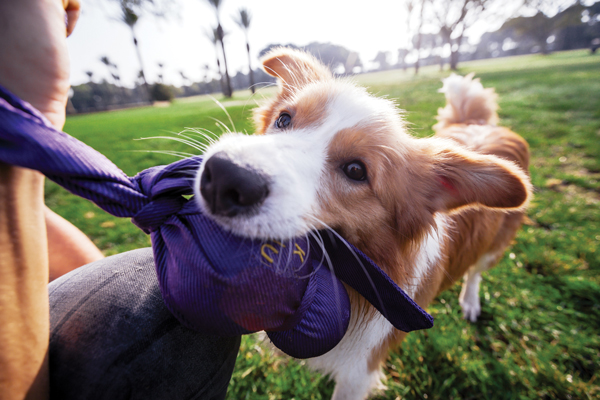
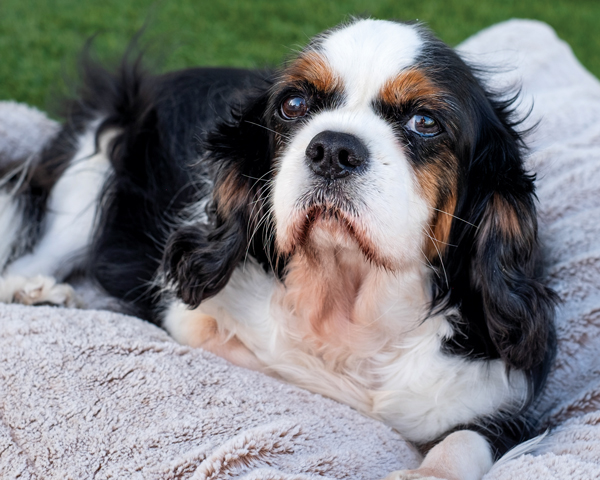
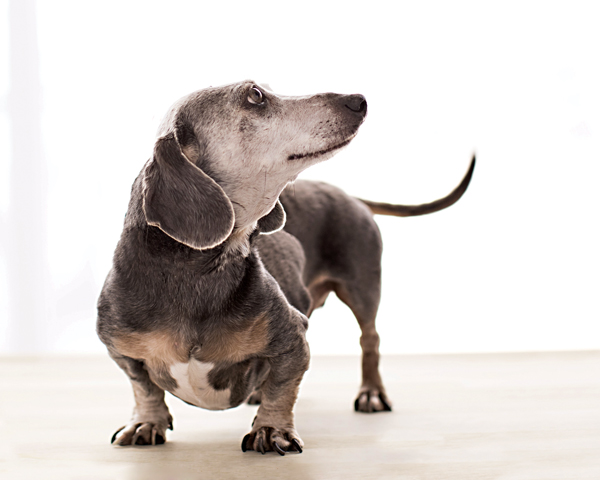
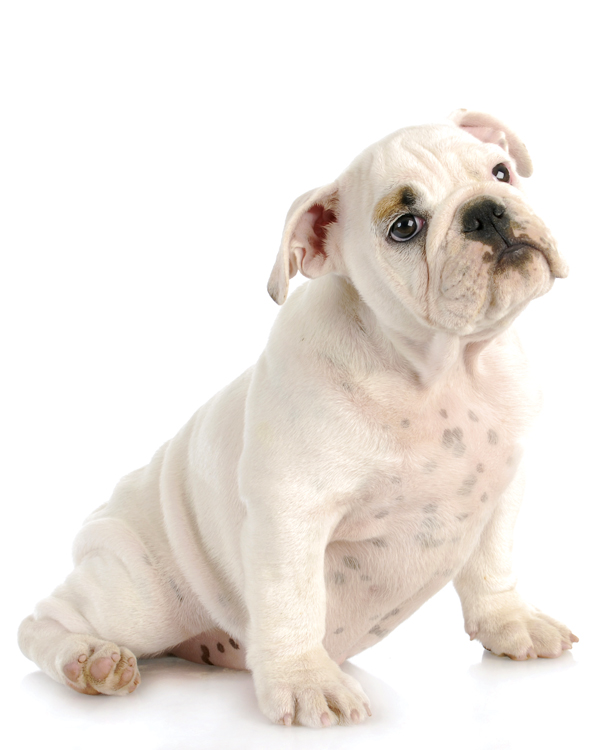
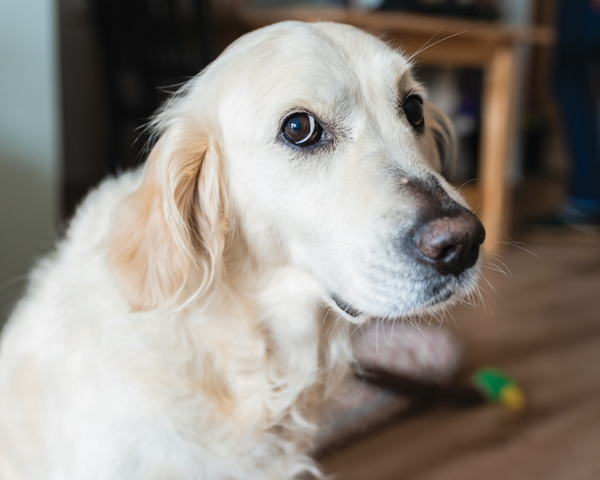
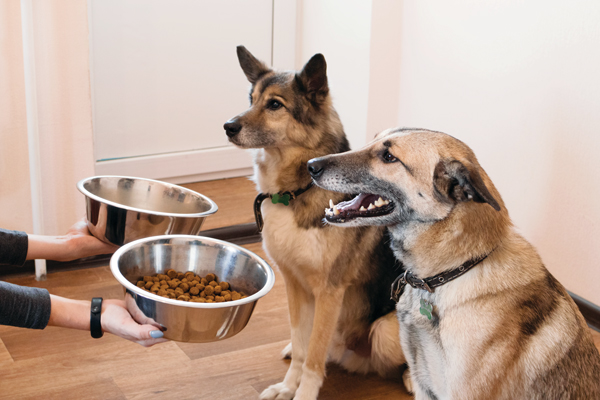
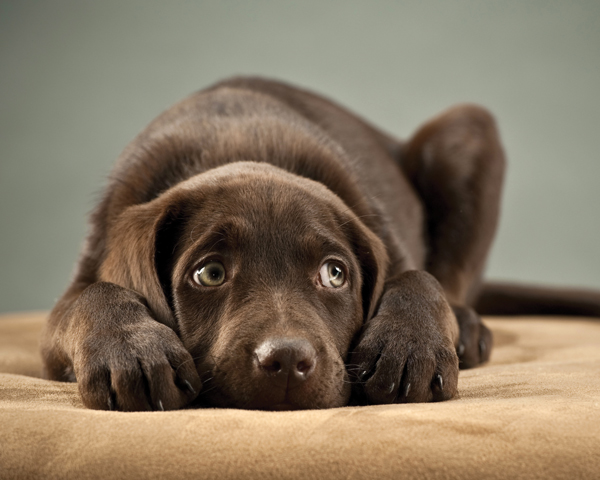
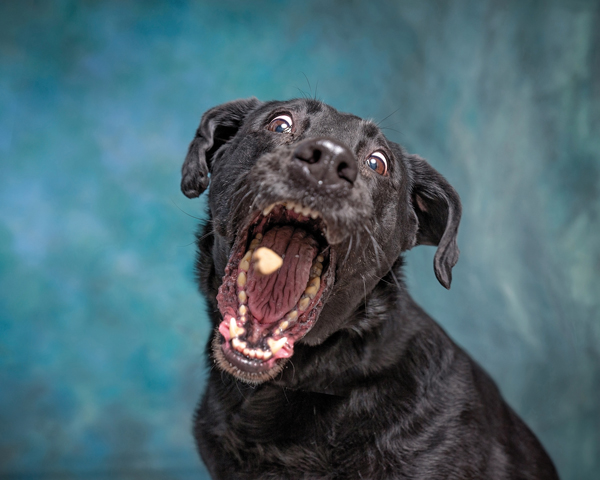
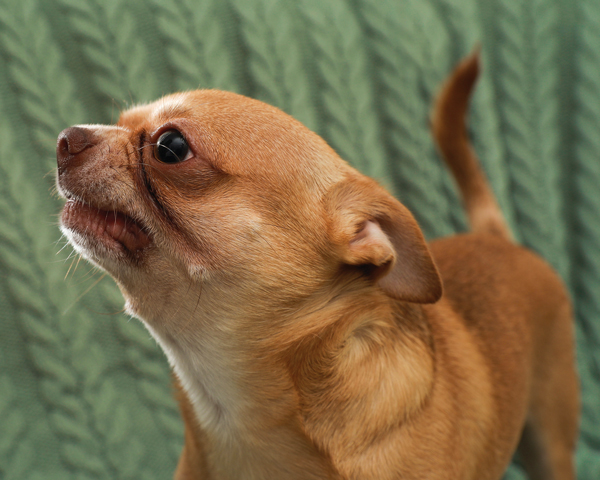
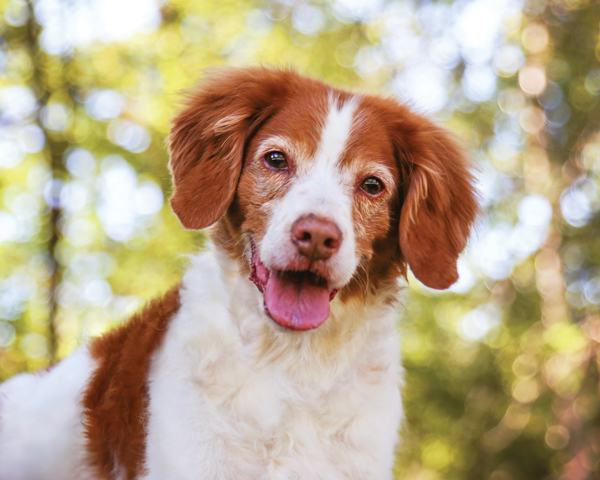
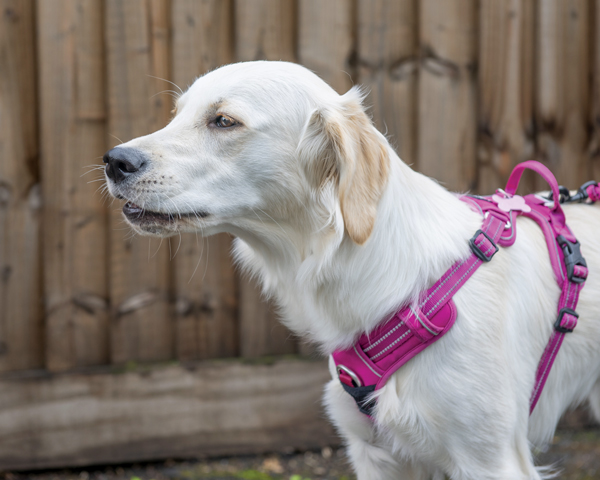
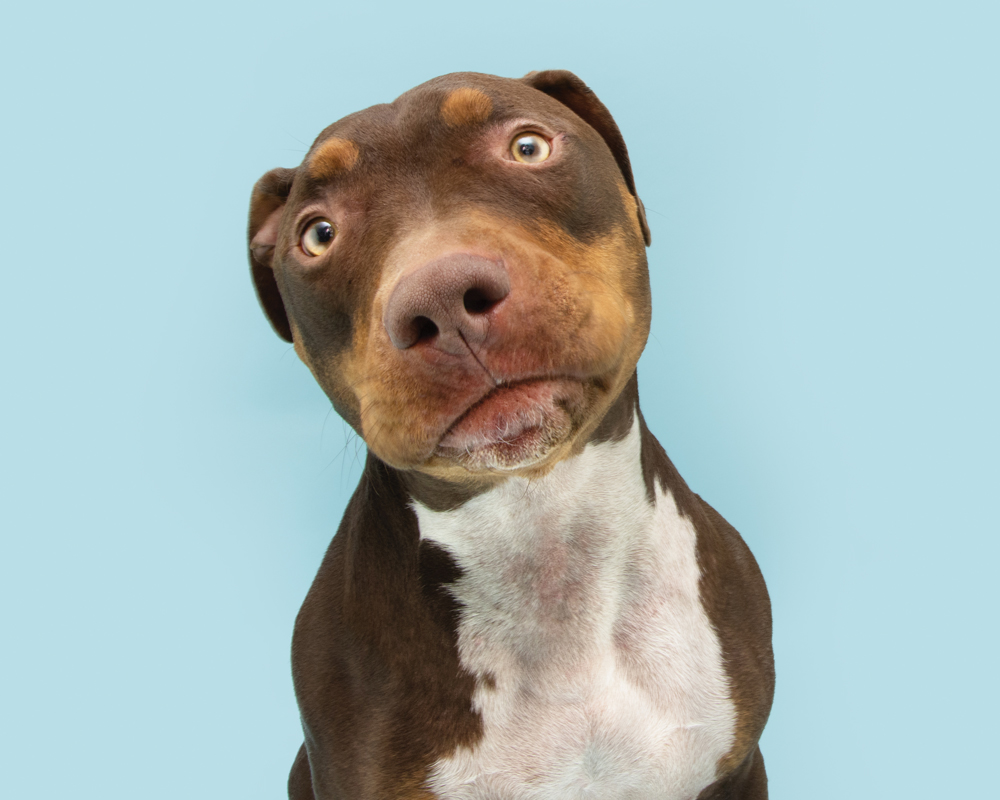
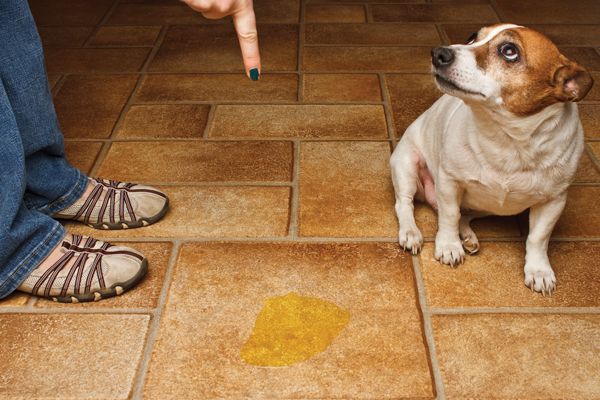
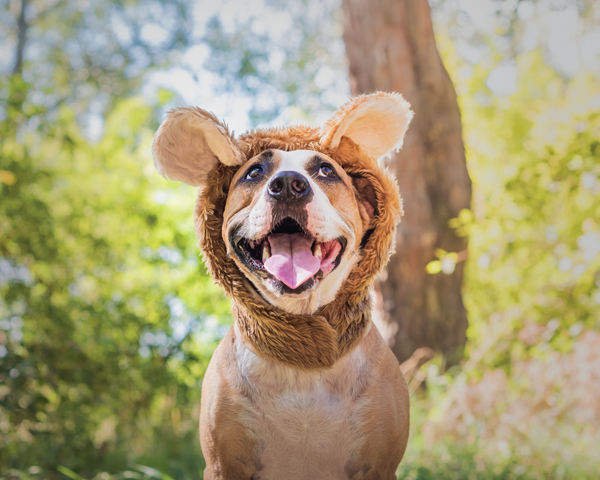
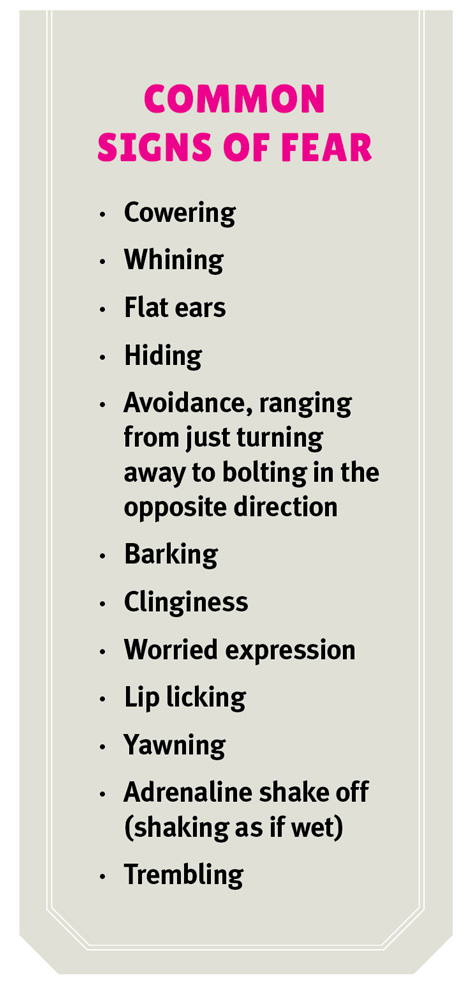
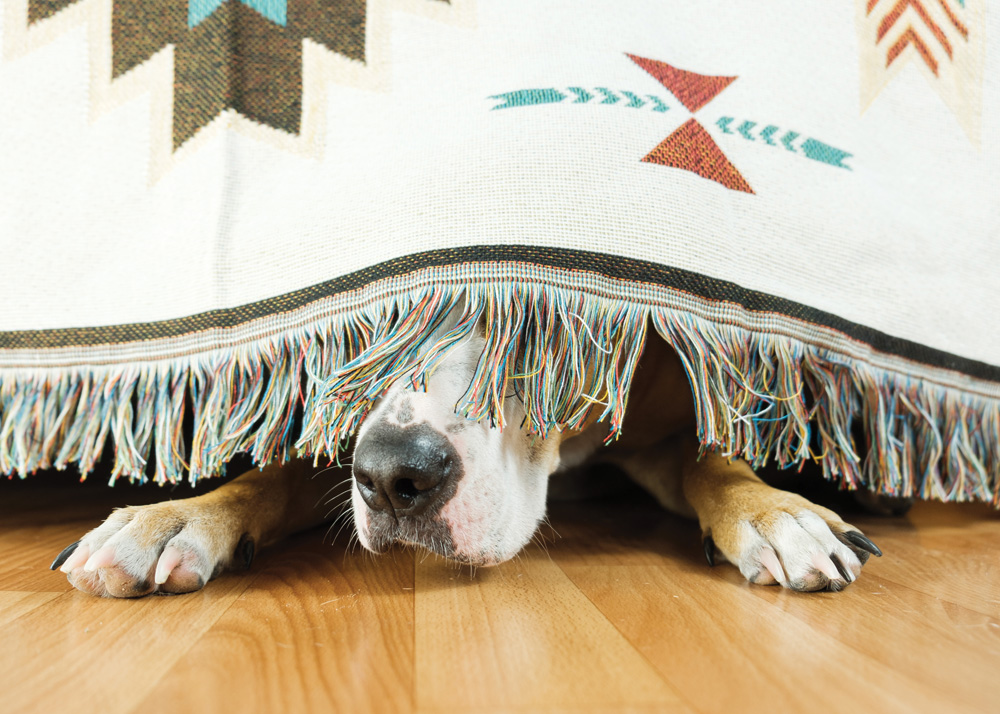
 1. Retrieve Toys by Name
1. Retrieve Toys by Name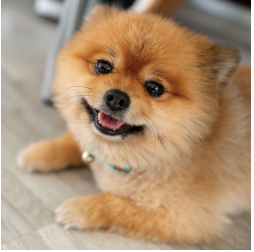 2. Hide-and-go-seek: version 2.0 or classic
2. Hide-and-go-seek: version 2.0 or classic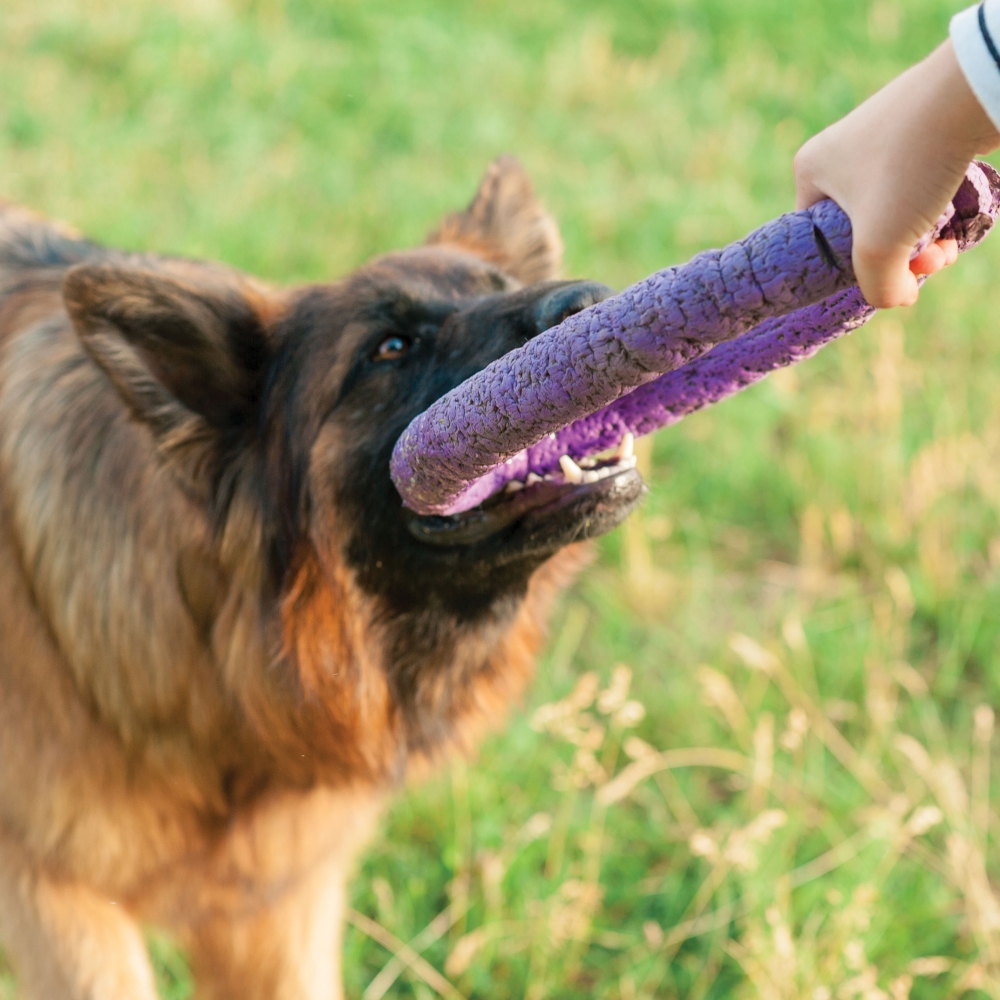 3. Tug-O-War
3. Tug-O-War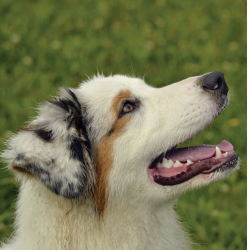 4. Nose Work
4. Nose Work 5. Agility Course Training
5. Agility Course Training